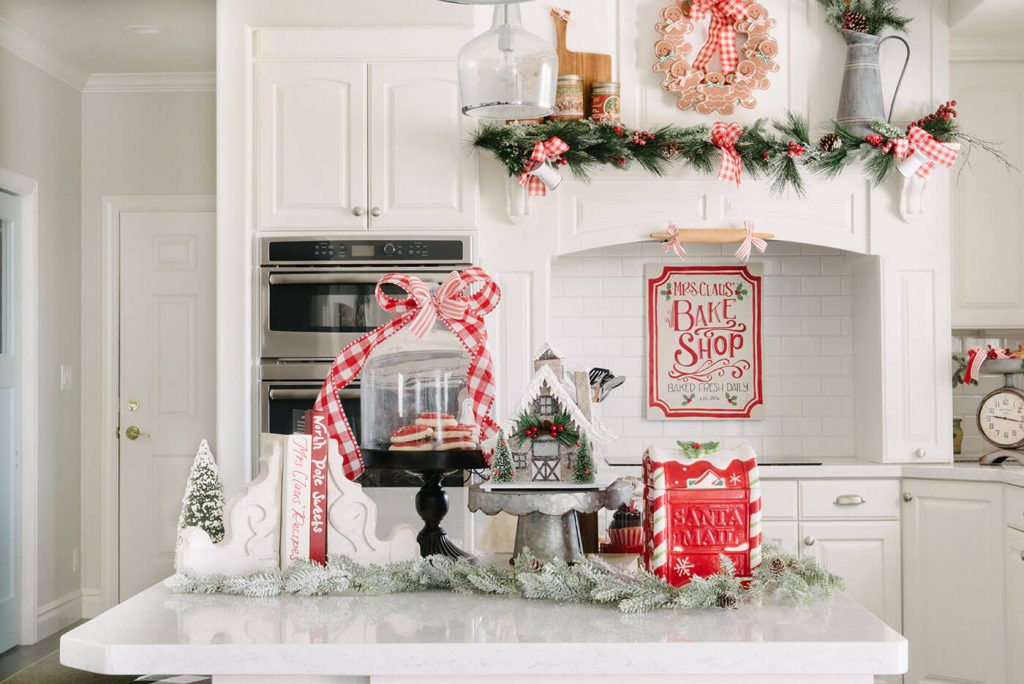
The holidays are a joyous time of year, with friends and family gathering at your home to celebrate the festive season. However, with all the fun of hosting festivities comes the inevitable care, maintenance, and cleanup that follows. If you have a quartz countertop, you’ll benefit from its durability and generally low maintenance requirements. It’s non-porous, stain-resistant, and high-performance, making it a great option for kitchens where social hosting is common. However, although it is relatively difficult to damage, you do need to take certain precautions to ensure that it maintains its stunning appearance. As a leading Gainesville stone supplier, we here at Jackson Stoneworks know all of the best tips and tricks for protecting your quartz countertops during the holiday season.
Whether it’s using a coaster or a potholder, adding a layer of protection between cookware or glassware and your quartz countertop will help better protect it. Quartz countertops cannot absorb heat in the same way that natural stone countertops can, and therefore it’s crucial to use a hot pad under any hot pans or dishes to avoid burning the surface of your counter. When it comes to drinking any beverages, using a coaster is a wise protective measure that can prevent stains. Although quartz doesn’t suffer from ring marks in the same way wood surfaces do, citrus-based drinks can damage quartz counters.
Even though engineered stone like quartz can resist stains much more than more porous materials like marble, you should still not allow any messes to sit there for too long. Allowing stains to set can permanently damage your countertops, regardless of what substance was spilled. As soon as the spill happens, clean the spill with a mix of mild soap and warm water. Work extra quickly if the stain is coffee, wine, or tea, as these tend to permanently stain more quickly than other liquids.
Quartz is designed to be scratch-resistant, but it’s not entirely indestructible. When cutting something with a sharp knife, never cut directly onto your quartz countertop. Be sure to use a cutting board or another protective layer to avoid scratching and permanently damaging your quartz countertop. Using a cutting board also helps preserve your knives and keeps them from dulling quickly.
After all of the festivities are over and the hosting has been done, take the time to thoroughly clean your countertops. This will help ensure that no residue or liquids stay on your countertop and cause permanent damage. When cleaning your quartz, avoid abrasive cleaners and scouring pads. Instead, use a mild detergent and a soft rag. Abrasive cleaners and harsh chemicals can disintegrate the bonds between the quartz and the resin and eventually damage the quartz surface. Mild soap and water are all it takes to clean your low-maintenance quartz kitchen counters.
When you’re in the midst of holiday fun, the last thing you want to worry about is the status of your stone countertop. That’s why Gainesville residents love Jackson Stoneworks quartz products; their durability makes them an excellent option for areas that receive heavy foot traffic, and they remain beautiful and elegant with little maintenance. If you want to ensure that your quartz countertops remain in the best condition possible, take the proper maintenance steps to preserve their beauty.
If you’re looking to renovate your home with stunning quartz countertops, use the form below to schedule an appointment with our sales team.

We are thrilled to share some exciting news that will revolutionize your experience at Jackson Stoneworks! We have integrated state-of-the-art Iris Scanner 12K technology, specifically designed to enhance the scanning process for full-slab quartz, granite, marble, and porcelain.
We are dedicated to enhancing your journey with Jackson Stoneworks, and the Iris Scanner 12K represents our commitment to bringing you the latest in technology for a superior stone selection experience.
Thank you for choosing Jackson Stoneworks as your trusted partner in premium quartz and granite solutions. We look forward to elevating your stone selection journey with the Iris Scanner 12K.
If you would to schedule a visit to speak with our sales team, please fill out the form below.
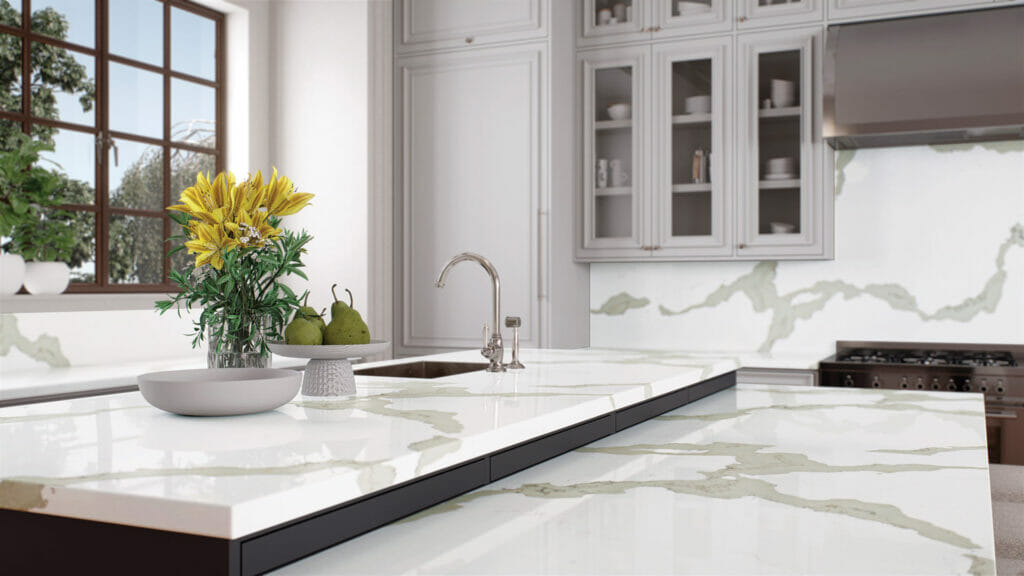
Many people consider the kitchen as the “heart of the house.” Friends visit this place, and the food is cooked for memorable moments. The kitchen should top the list when designing a new house since the type of countertop used goes a long way in determining the kitchen’s appearance and its overall efficiency. This all-comprehensive guide will discuss four commonly used countertops in kitchens: granite, quartz, porcelain, and marble. Each of these materials has different properties, advantages, and cons; therefore, you can choose the one right for your lifestyle and design style.
For many years, granite countertops have gone hand in hand with opulence and everlasting taste. Granite is attractive due to its inherent characteristics, such as distinctive stripes, patterns, and vivid shades. The trip to the granite yard becomes important as all slabs are pieces of artwork, and each one has to be unique to fit into your kitchen. Well-sealed granite countertops are quite durable and can withstand any kitchen stresses. This feature also accounts for their suitability among active home cooks since they resist heat in hot pots and pans. The elegance that comes with granite countertops must be emphasized. Many homeowners prefer this material for durability and timelessness to achieve a classical kitchen design.
Quartz countertops are our most popular. They provide strength and beauty to people who like a little more even and artificially engineered feel. Made of natural quartz, pigments, resins, and polymers, these countertops are resilient to heat, scratches, and stains. Quartz is a kind of stone with a non-porous surface, making it perfect for preparing food since it cannot absorb bacteria. Quartz countertops are consistent in color all over the board and can match well with any kitchen look. Quartz countertops are always a great option for culinary fans and someone looking for a simple, modern idea as one package.
Currently, porcelain countertops are one of the rising stylish and long-lasting choices. The countertops are renowned for being scratch- and heat-resistant, giving out a sophisticated look with uncompromised functionality. With a wide color scheme and designs, homeowners can use the kitchen to showcase their style.
Porcelain countertops are an option for those wishing to express a strong design yet resist everyday abuse. Porcelain countertops are also quite sensitive and require careful handling of heavy objects, so they do not chip; however, with good maintenance, they are an excellent investment for any modern kitchen.
A talk about the most trendy kitchen countertop materials can’t be finished without emphasis on the everlasting beauty of marble. Being known for its luxury appearance, marble countertops have symbolized sophistication since immemorial. It is a common material among homeowners because it comes with naturally occurring veins and patterns, making it incredibly luxurious.
Jackson Stoneworks provides this range of kitchen countertop options, including granite, quartz, porcelain, and marble. Their dedication to designing, supplying, and installing will ensure that your kitchen is completed with all the details. From the classical appeal of marble to more recent style elegance, Jackson Stoneworks will give you the perfect choice that best suits your needs.
Marble should be addressed when selecting the best countertop for a new home build because it is always beautiful and classy. Each of these materials has special strengths: Granite, quartz, porcelain, or marble. Jackson Stoneworks provides diverse offerings, thus transforming your kitchen to blend fashion with function. Select a countertop that fits your vision and way of life, and start realizing your dream kitchen.
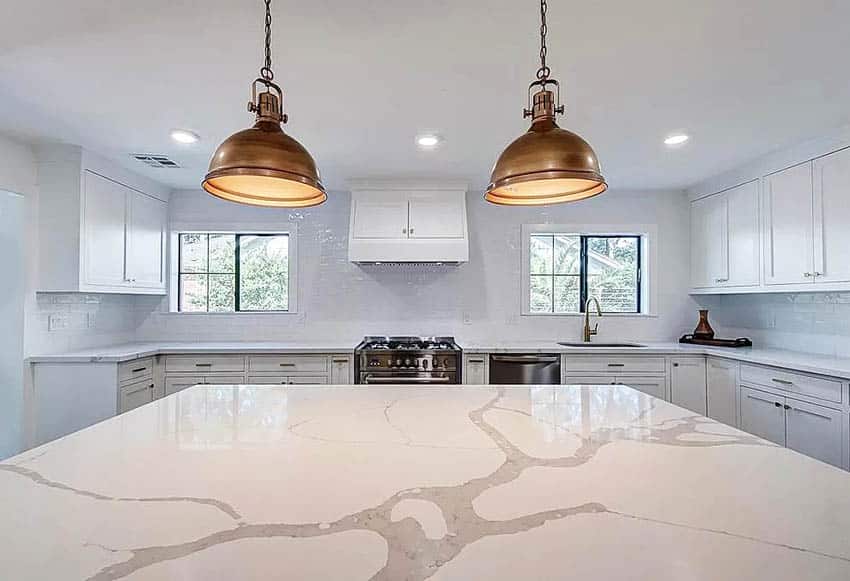
Calacatta Patriotic quartz countertops are beautiful, unique pieces of stone that will add a magnificent look to a kitchen, bathroom or any bar imaginable. Below is information on the colors, prices and types of Calacatta quartz countertops that are commonly available.
Calacatta Patriotic Quartz is an extremely durable piece of quartz. These pieces of quartzite are thick, natural, and a great statement of strength. Calacatta Patriotic Quartz is used a lot due to its stain and scratch-resistant qualities, making it suitable for various environments.
The quartz has these qualities because it is extremely hard and durable, and easy for maintenance and caring. This gives the opportunity to use this material in a plethora of places, including bathrooms, kitchens, dining rooms, etc.
Calacatta Patriotic quartz typically has distinct veining that makes it a unique and practical piece. Calacatta is a white piece of quartz and it has a blue gray veining color. Some types have varying hues and tints to the white, as well as incorporating some more brown gray versus the cooler, traditional blue gray veining.
The patterns of the veins also vary from type to type, even from piece to piece, as they are all used to create unique pieces of quartz. These features often resemble that of an expensive marble in appearance, but are still a quartz material.
Most Calacatta Quartz slabs are available in both 2 cm and 3 cm slabs as well as some prefabricated options for design and installation flexibility. The thickness can vary based on the place you get the stones, and it can change the pricing for it as well.
Calacatta quartz is a clean, bright white and features some gray blue toned veining. The veining is commonly thick and dramatic. Some certain kinds of Calacatta Patriotic have extra colors thrown in such as golds and browns.
While Calacatta is a type of quartz itself, there are also subcategories of types of Calacatta quartz, with slight differences in color and veining. These stylish options can be used for various project types, such as enhancing the walls or surfaces of a given space.
Between patterns, small shade differences and the amount of translucence to each piece, there are a ton of selections so each design can have the perfect Calacatta quartz pieces. The wide variety of options available allows homeowners and construction services to find the right fit for any job.
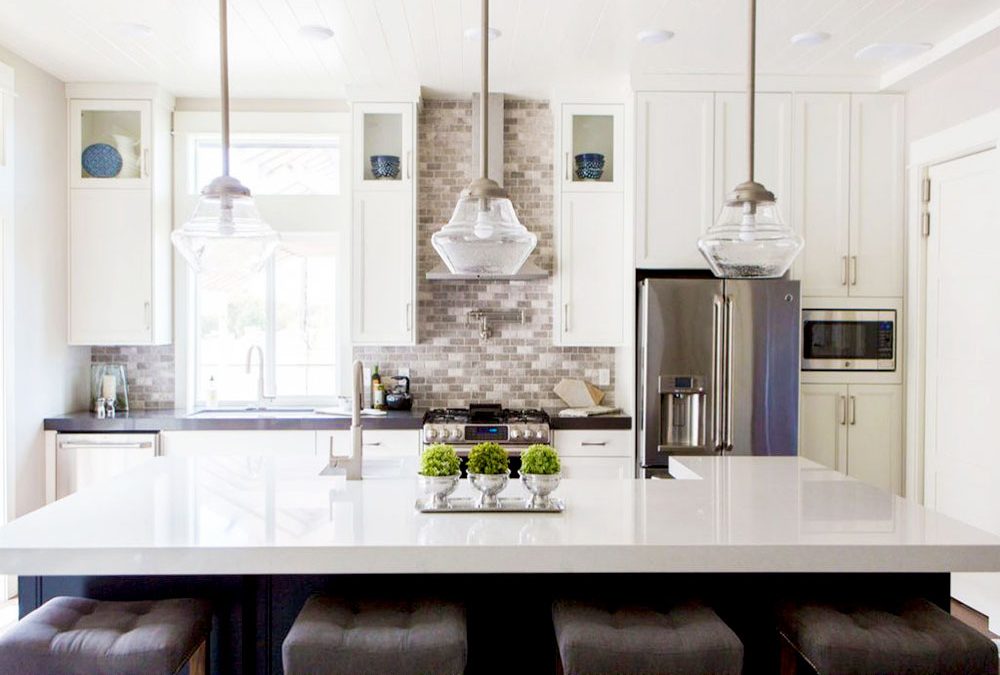
When it comes to adding value to your home, upgrading your countertops is an easy and effective way to make a significant impact. A new set of countertops can transform the look and feel of your kitchen or bathroom and even increase the resale value of your home. And if you’re looking for a durable, high-quality material that can stand up to the demands of everyday use, quartz may be the perfect choice for you.
Quartz countertops have become increasingly popular in recent years, thanks to their durability, versatility, and attractive appearance. Made from a combination of natural quartz stone and resin, these countertops are highly resistant to scratches, stains, and heat damage, making them ideal for busy households with lots of foot traffic. They’re also available in a wide range of colors and patterns, so you can find the perfect match for your home’s decor.
One of the most popular styles of quartz countertops is white quartz, which has a clean, classic look that can brighten up any room. White quartz countertops are a great choice if you want to create a timeless, elegant aesthetic that will never go out of style. And if you’re looking for a white quartz countertop that really stands out, Calacatta Miraggio Duo is a fantastic option. This stunning quartz features a striking veining pattern that mimics the look of natural marble, giving your kitchen or bathroom a luxurious, high-end feel.
Of course, one of the most important factors to consider when upgrading your countertops is the cost. Quartz countertops can range in price from around $40.00 per square foot to $130.00 per square foot, depending on the specific style and quality of the quartz you choose. This means that the cost of a new set of quartz countertops for the average house can range from $2,500 to $6,000.
While this may seem like a significant investment, the truth is that upgrading your countertops can be one of the most cost-effective ways to add value to your home. In fact, according to Remodeling Magazine’s Cost vs. Value Report, a minor kitchen remodel that includes new countertops can have an average return on investment (ROI) of 72.8%. This means that you can expect to recoup nearly three-quarters of the cost of your new countertops when it comes time to sell your home.
So, if you’re considering upgrading your countertops to quartz, where should you go to find the best price and selection? Jackson Stoneworks is the premier fabricator of new countertops in Gainesville, Florida and we offer the best prices on quartz countertops in the area. Our showroom at 1111 SE 22nd Ave, Gainesville, FL 32641. Our friendly and knowledgeable design staff are always on hand to help you choose the perfect quartz countertop for your home.
At Jackson Stoneworks, we understand that every home is unique, and that’s why we offer a wide range of quartz countertop styles to choose from. Whether you’re looking for a classic white quartz, a bold and dramatic black quartz, or something in between, we have the perfect option for you. And because we’re the premier fabricator of new countertops in Gainesville, Florida, we’re able to offer our customers the best prices on the highest-quality quartz countertops.
When it comes to upgrading your countertops, investing in quartz is a smart choice that can add value and beauty to your home for years to come. And when you’re looking for the best price on quartz countertops in Gainesville, Florida, there’s no better choice than Jackson Stoneworks. Stop by our showroom today to see our full selection of quartz countertops and to speak with our friendly and helpful design staff. We look forward to helping you transform your home with the beauty and durability of quartz countertops.

Kitchen countertop upgrades are an easy way to impact your kitchen’s design, but they’re not just there to look good. Countertops serve several important functions in the kitchen, especially if they are made of high-quality materials. There are several types of countertops, and the different types have different benefits.
Here’s a look at five benefits of countertops for kitchens that you might not have known about, as well as our recommendations for the best countertops for any home.
It’s well worth it to upgrade your countertops now if you ever plan to sell your home. The National Association of Realtors (NAR) found that homeowners who upgrade their countertops experience a high level of satisfaction, want to spend more time at home, and also make back about 60% of the upgrade cost when it comes time to sell.
Upgrading your kitchen countertops is sure to make a big statement, especially when you pair it with other upgrades like custom cabinets and updated fixtures. A full kitchen remodel gives homeowners up to 75% of their money back when it comes time to sell their homes. But that’s not the only benefit. Many people choose to upgrade for better functionality of their space.
If your kitchen is still boasting laminate countertops, there’s a good chance they’ve got a scorch mark or two. They might also have some scratches and peeling corners. Builders often use laminate countertops because they are inexpensive and can be made to look nice, but they aren’t very durable and won’t last long.
Natural stone counters, on the other hand, are widely considered to be the best countertops because they are extremely durable and resist heat. You still need to use hot pads, of course, but you don’t need to worry nearly as much about scorching or melting your countertops when they’re made of natural stone.
Many people only consider appearance when shopping for the best kitchen counter. They fail to consider how easy or difficult it will be to keep them clean and maintained. But most homeowners spend a lot of time in the kitchen, and easy cleanup and maintenance are a huge benefit.
Take tile countertops, for instance. What business does all of that grout have on a kitchen counter? Nobody has time to scrub the grout, especially when a quick wipe could do the trick on other types of countertops. Wooden countertops are another popular option that requires specialized cleaning and maintenance.
Solid slab countertops like granite, quartz, and marble, are extremely low maintenance and are fast and easy to wipe off. You don’t need any special cleaners, either. Avoid using abrasive cleaners, and wipe them down with gentle soap and a soft rag. No grout-scrubbing or wood sealing is required.
It’s often been said that the kitchen is the heart of the home, and its appearance sets the tone for the rest of your home. Homes with extremely outdated kitchens are likely to be outdated everywhere else. So if you’re looking for a way to refresh your entire home, upgrading your countertops is the best place to begin.
The best kitchen counter for your home is one that complements the rest of the colors and design elements in your space. If you haven’t upgraded your cabinets and sink yet, talk to a professional remodeling company first to get ideas so that your countertops will match your new design. They will help walk you through the countertops that will work for you.
You’ll be amazed at the transformation once your kitchen counters are upgraded. Beautiful countertops will set the tone for the rest of your home and will be a focal point for anyone welcome inside.
Once you upgrade your countertops, you shouldn’t have to replace them again for a long time. Here’s the key to long-lasting countertops:
Are you ready to reap all of these benefits of kitchen countertops and more? Jackson Stoneworks is here to help every step of the way. We offer premium granite, marble, porcelain, and quartz countertops that are a surefire way to upgrade the look and feel of your kitchen and your entire home.
We have everything you’ll need to create the kitchen of your dreams, from custom cabinetry to high-quality countertops and everything in between.
We specialize in remodeling kitchens and bathrooms across the Alachua, Gainesville, Archer, Waldo, Newberry, Hawthorne, High Springs, and Micanopy. Contact us today to learn more about what we have to offer, or swing by our showroom in Gainesville, Florid, and see some of our beautiful options and designs for yourself.
We’ll be happy to answer any questions or schedule an in-home consultation with you. Let us help you design the kitchen of your dreams. We can’t wait to work with you!

With the holidays just a hop, skip, and a jump away, it is about time you think about getting your home ready for the onslaught. You want to make sure family and guests will have a favorable impression, especially in your kitchen where you will be spending a lot of time.
You have enough time to do a kitchen upgrade if you have the budget. A kitchen upgrade can make your home much more functional and attractive. However, if your budget is a little tight what with all the expenses of the holidays, you might want to limit your upgrade to replacing your kitchen countertops. Continue reading today’s featured article of the week for some tips on prepping your granite countertops for the holidays.
Make no mistake, replacing your countertops will require a bit of work. However, if you start now, you can be ready for Halloween, and definitely for Thanksgiving.
You should replace your kitchen countertops if they are outdated, or they are not in good health. This often happens when you choose materials that do not age well or are not durable. This should be a lesson to you the next time you choose the material. Granite is not only beautiful and classic; it is also extremely durable and will last you for generations.
Nevertheless, you should still consider all your options. The choice of kitchen countertops will depend largely on your lifestyle and the way you use your kitchen. You need countertops that can take a lot of work without visible damage and will require little maintenance, especially if you are a busy homeowner.
You should also choose the color carefully. Since you might not be doing a complete remodel, you must be sure your new countertops will go well with your current design. Find a color that matches or complements the existing colors in your kitchen. Granite countertops come in a wide variety of colors and designs, so you are sure to find one that will fit perfectly, and make your kitchen look even more fantastic.
You should also consider putting in additional features such as a kitchen island or a significant overhang for your countertops to double as a dining area and entertainment center. These extra features can go a long way to transforming the function and aesthetics of your kitchen.
By simply upgrading your kitchen countertops, you can ensure that your holiday celebrations will be festive. The best thing about this is that your granite countertops will continue to serve you well beyond the holidays, so it is money well spent.
Assuming you went ahead and chose new granite countertops for your kitchen, you should next consider how to make it holiday-ready. It can be easy to forget that while granite countertops are low maintenance, they still need some care, like any other material.
Assuming you went ahead and chose new granite countertops for your kitchen, you should next consider how to make it holiday-ready. It can be easy to forget that while granite countertops are low With the holidays just a hop, skip, and a jump away, it is about time you think about getting your home ready for the onslaught. , they still need some care, like any other material.
Granite is durable, but it is also a natural stone, so it has some level of porosity. You have to ensure that you protect it from possible surface damage, especially during the busy holiday season. It would help if you were ready for whatever comes when the parties and gatherings start.
Replacing and prepping your granite countertops for the holidays is a smart move. It gives you the perfect excuse to spend on upgrading your kitchen. If you need assistance, do not hesitate to call a reliable countertop specialist.
Jackson Stoneworks is your best resource for advice on durable kitchen countertops if you are in the Alachua County area. We offer free estimates and quotes for any of your kitchen countertops and remodeling needs.
We carry a wide range of natural stone slabs. Over 100 colors of quartz, granite, porcelain, and marble slabs are available for inspection at our Gainesville, Florida showroom. We are the best supplier for granite countertops in your area.
If you prefer engineered stone, we can offer you products from the best-engineered stone brands in the country. These include Cambria, Caesarstone, Silestone, and MSI brands, each one carrying the manufacturer’s warranty. You can choose what you want and we will deliver it ASAP!
Feel free to ask any questions over the phone at 352.372.6600, or get in touch using our contact form below today!
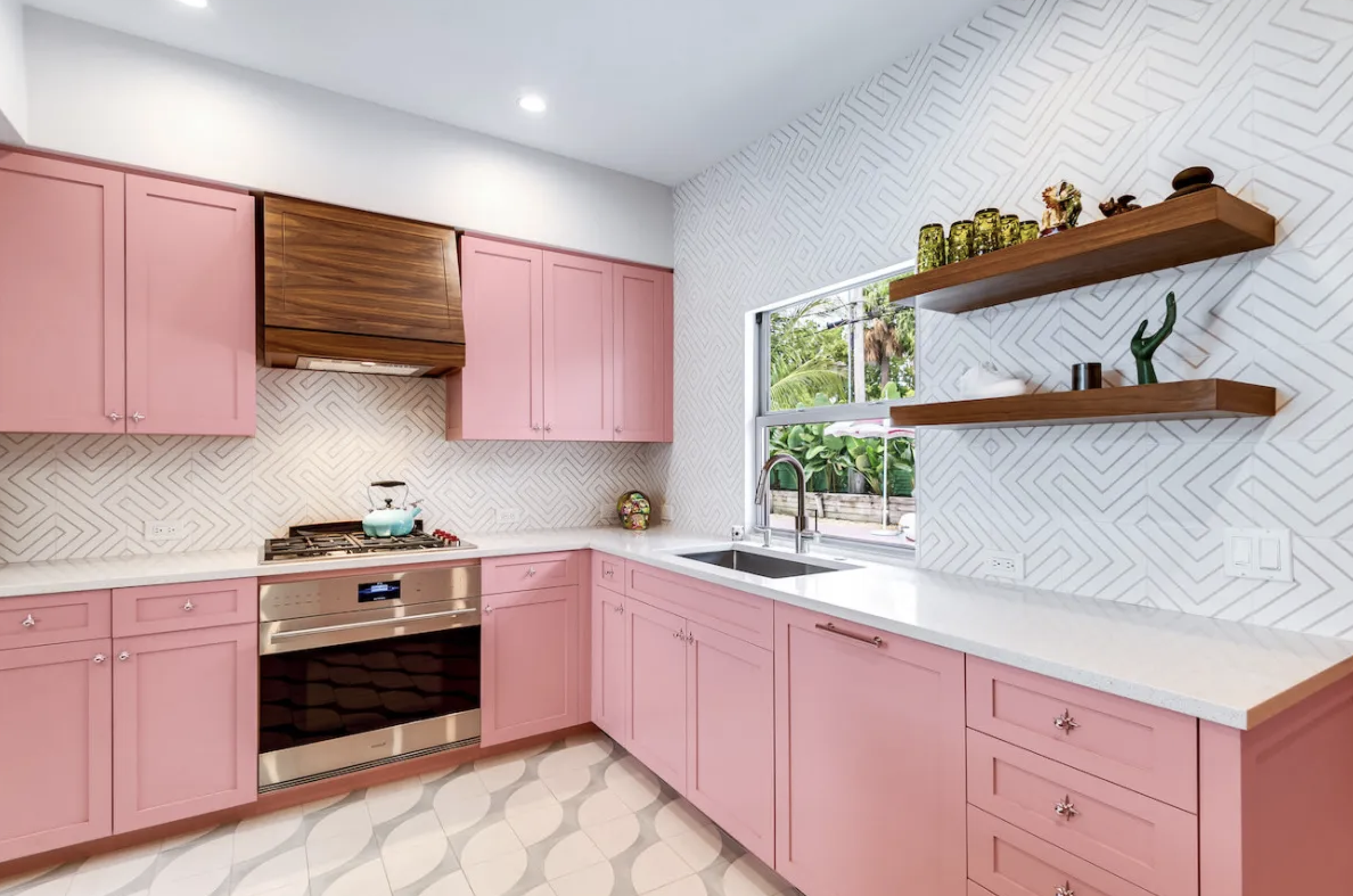
When starting a kitchen or bathroom renovation, there are a variety of things you must make decisions on such as cabinet colors, sink options, color hardware, and your countertops. When picking your countertops, it tends to come down to two different options for the material: granite or quartz. Although they are not vastly different from each other, there are key differences that may influence your choice when the time comes to decide. Hopefully, this article can make your decision a little easier.
Quartz countertops are engineered stone products made of 93% crushed quartz mixed with resins. Most of the material is composed of minerals but anywhere up to 7% can be resins and color pigments. Resin refers to a certain material category of semi-solid natural and synthetic compounds that can be hardened into a highly durable plastic material.
Granite countertops are slabs of quarried stone. It is produced from purely natural stone that is mined directly from quarries and is then cut into thin slabs, polished, and fabricated into countertops.
Since quartz is a man-made stone, it is much more uniform in appearance compared with granite. One of the biggest reasons quartz has become so popular is due to its similar appearance to stone while also allowing homeowners to customize the design. Quartz is usually designed to resemble stone, but it is also engineered in formats that do not resemble stone.
Due to granite being a natural stone and the way it is formed (cooling and solidifying of molten materials), no two slabs of granite are the same. Every granite slab is slightly different in mineral pattern and color which means your countertops would be completely unique. Real granite can display dramatic veining and patterns that cannot be replicated in quartz.
Due to its porous nature, granite needs to be sealed when it is installed. It is recommended to reseal it once a year after installation. Granite countertops may be cleaned with soap and water or a mild household cleaner. To avoid stains, make sure you research which cleaners are best for your granite countertops. Some cleaners may contain harsh chemicals that can damage your countertops.
Because quartz contains resins that make the surface less porous than granite, it more resistant to staining and therefore does not require sealing. Like granite, you can clean your quartz countertops with soap and water or a household cleaner.
Both granite and quartz are considered premium and high-dollar countertop materials. According to HomeAdvisor.com, the average cost of purchasing and installing granite can cost between $2,000 and $4,500 for kitchen countertops. And the average cost of purchasing and installing quartz can cost between $3,000 and $7,500 for kitchen countertops.
There are things you can do to save time and money in your kitchen countertop installation process. Some things include preparing your cabinets and making sure they are leveled, having the correct information for the sinks you want installed, and even having the correct appliance dimensions. If you have no experience with construction and home remodeling, we suggest speaking with a professional. They will talk you through the entire installation process and recommend what is best for your specific situation. When it comes to actually installing the countertops, both quartz and granite are extremely heavy materials that are difficult to cut and drill. It is best to have a professional fabricate and install your countertop.
Both quartz and granite are premium and beautiful options to install in your dream kitchen renovation and bathroom renovation. They add to the users’ enjoyment of their kitchen or bathroom. They also add solid resale value to your home for the future if you decide to sell. When people are looking into buying a new house, they tend to prefer granite and quartz countertops. This is in comparison to other materials used for countertop renovations such as laminate, solid surface, or tile. When deciding between the two materials, granite appeals to people who like all-natural materials with unique appearances and don’t mind the occasional resealing. Quartz counters offer easier maintenance and slightly better durability, but it does not offer the unique look of natural granite.
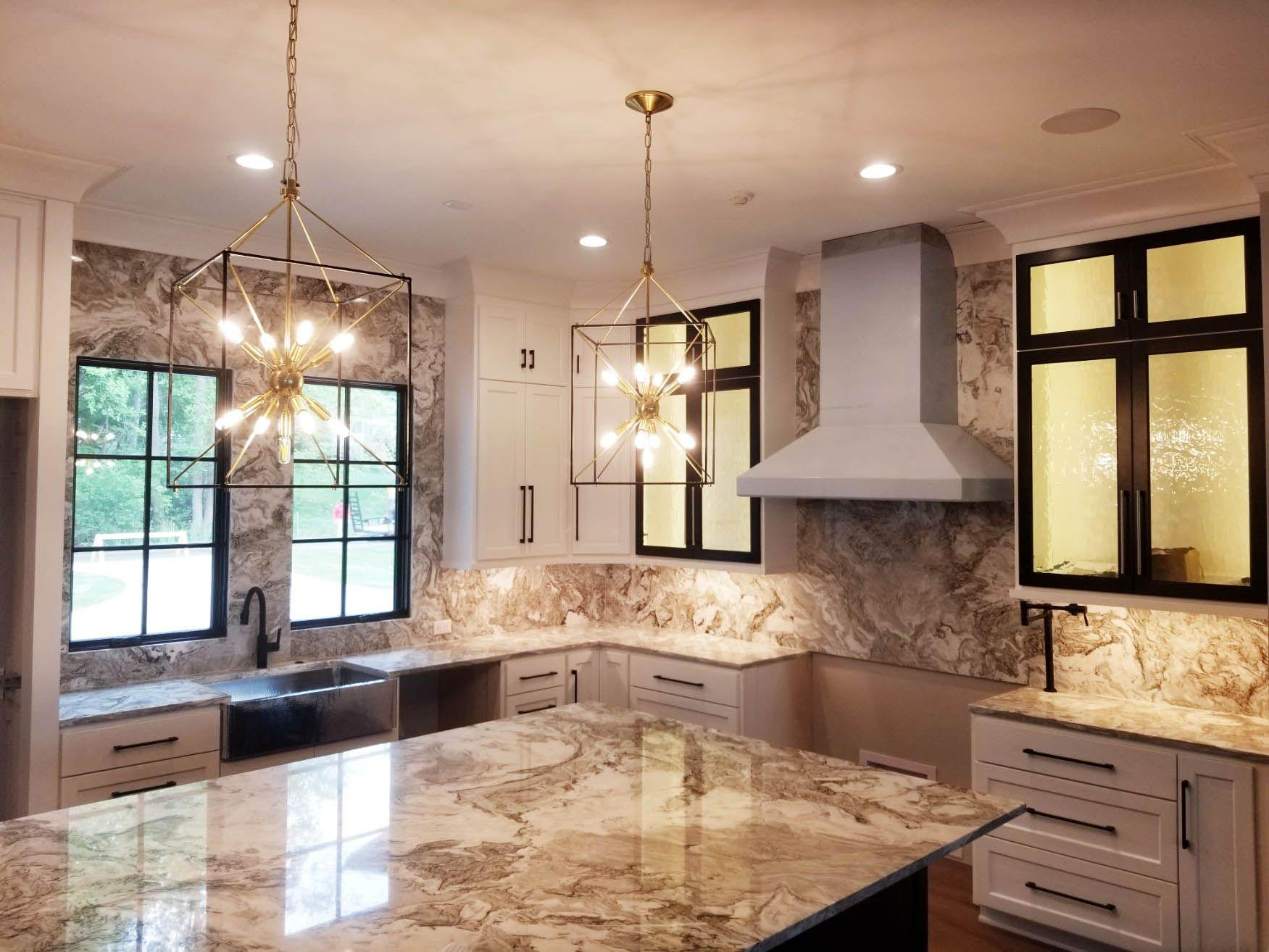
Are you thinking of remodeling your kitchen? Are you thinking of what materials to use for your countertops? Relieve yourself from the whole hustle by contacting our Jackskon Stoneworks for all matters to do with kitchen remodeling. A kitchen is the most important area in your house for your whole family. Remodeling it will make it more attractive and free from bacteria growth and granite is the best material you can use to achieve your goals.
Listed below are the benefits of using granite for your countertops
Granite is a hard stone hence it is long lasting and is easy to maintain. It can withstand hot dishes and scratches form knives. Granite gives your countertop resistance to wear and tear. Cleaning it also takes little effort, as you just need to smear it with warm water using a lenient cloth. This makes it less vulnerable to bacteria growth.
Granite is the most affordable material that can work with a low budget hence minimizing cost. It also comes with a variety of color to choose from which can best suit your kitchen countertops.
The visual appearance of granite is more attractive when compared to other options in the market. Due to its natural look, with natural patterns and drawing, it makes the kitchen have a greater aesthetic appeal.
Granite does not break easily. This makes your kitchen the safest place for your entire family. Refurbishing and changing it is also easy as it is small.
This makes it comfortable for use by your entire family. You can place hot dishes on it without any fear of overheating it.
Granite has a firm shape that makes it usable without support of other items. It can accommodate any type of cooking. This also makes it simple to repair. Its flat surface also offers space for perfect cutting.
Schedule to Speak to a Jackson Stoneworks Sales Person About Your Granite Needs
Stay connected with all the latest trends in Kitchen & Bath! Sign up for our FREE Granite Buyers Club